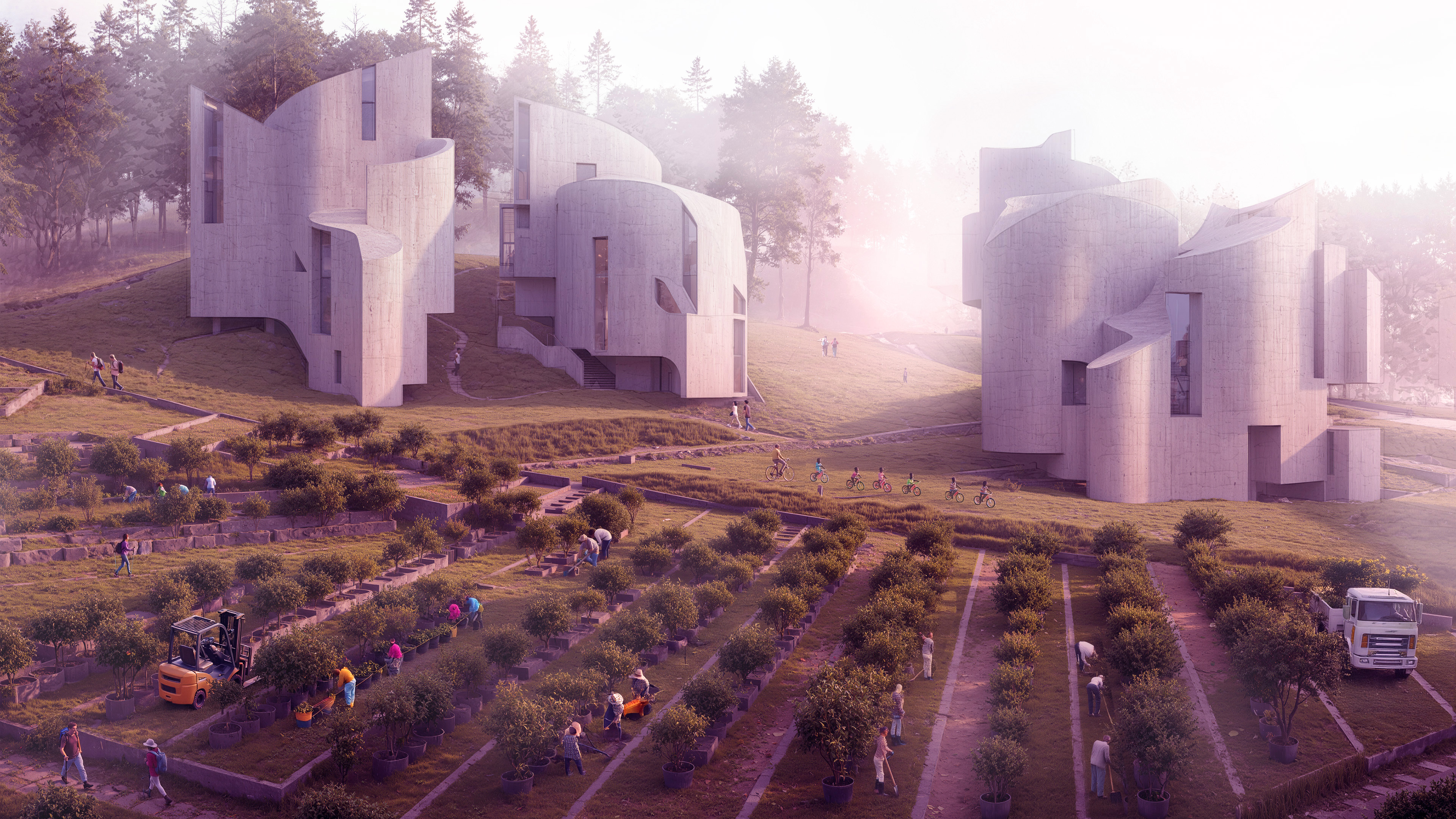
Imran Ahmed, Ena Yanchapaxi Burneo, and Taeseung Seong (all MSAUD ‘25) shine in ACLA 2x8 competition
Nov 24, 2025
UCLA Architecture and Urban Design's Imran Ahmed, Ena Yanchapaxi Burneo, and Taeseung Seong (all MSAUD ‘25) are among the nine winning teams in this year's 2×8 competition, the annual student exhibition and scholarship program sponsored by AIA-LA and Architecture for Communities Los Angeles (ACLA). Awardees were honored at a November 20, 2025 ceremony at AIA-LA's Center for Communities, and their projects are part of the 2x8 exhibition on view this winter.
This year's 2x8 theme, "Resilience," called for innovative responses to the increasing threats of wildfires, earthquakes, landslides, hurricanes, extreme weather, and coastal erosion. This was the program's 22nd cycle, with jury including Barbara Bouza, Thom Mayne, and Trevor Abramson.
Ahmed, Borneo, and Seong earned a Merit Level Scholarship for their project "Sea Ranch," completed for the 2024-2025 UCLA AUD Research Studio "Sea Ranch: Building with Extremes" led by AUD's Jeffrey Inaba and Tucker van Leuwen-Hall. Taking up the iconic Northern California community, Inaba and van Leuwen-Hall challenged the studio to investigate Sea Ranch–famous for its knitting-together of landscape and buildings–and adapt it to current and future climate risks, especially wildfire.
Ahmed, Borneo, and Seong’s project incorporates several resilience and risk-mitigation strategies that, the team notes, reinterpret the relationship between forest, settlement, and fire at Sea Ranch. Their project presents a series of modular units built with prefabricated concrete panels, providing a primary layer of fire-resilient construction while allowing for low-impact installation on a sensitive site.


More generally, the proposal reframes the forest itself as a long-term protective system. The existing non-native, overly dense vegetation—currently a high fuel load and risk for the community—is replaced with a working forest nursery. This nursery cultivates native, fire-adapted species, transforming the site into a regenerative landscape where tree growth becomes an asset for community protection and ecological renewal. As the forest matures, it provides natural buffers, improves biodiversity, and generates seedlings that can be replanted in other fire-vulnerable regions across California.
This ecological approach, the team observes, would not only enhance resilience but also resonate with Sea Ranch’s long-standing ethic of environmental stewardship.

"Historically, the community has treated the surrounding landscape as a shared resource, with residents collectively maintaining trails, managing vegetation, and preserving the delicate balance between built and natural environments," the team writes. "By interweaving housing, pathways, and the working nursery, the project extends this tradition, enabling residents to participate more actively in ecological care and risk management."



Related Faculty |
Jeffrey Inaba, Tucker van Leuwen-Hall |
Related topics |
Sustainability, Urban Strategy, Climate Change, Resilience, Ecology |